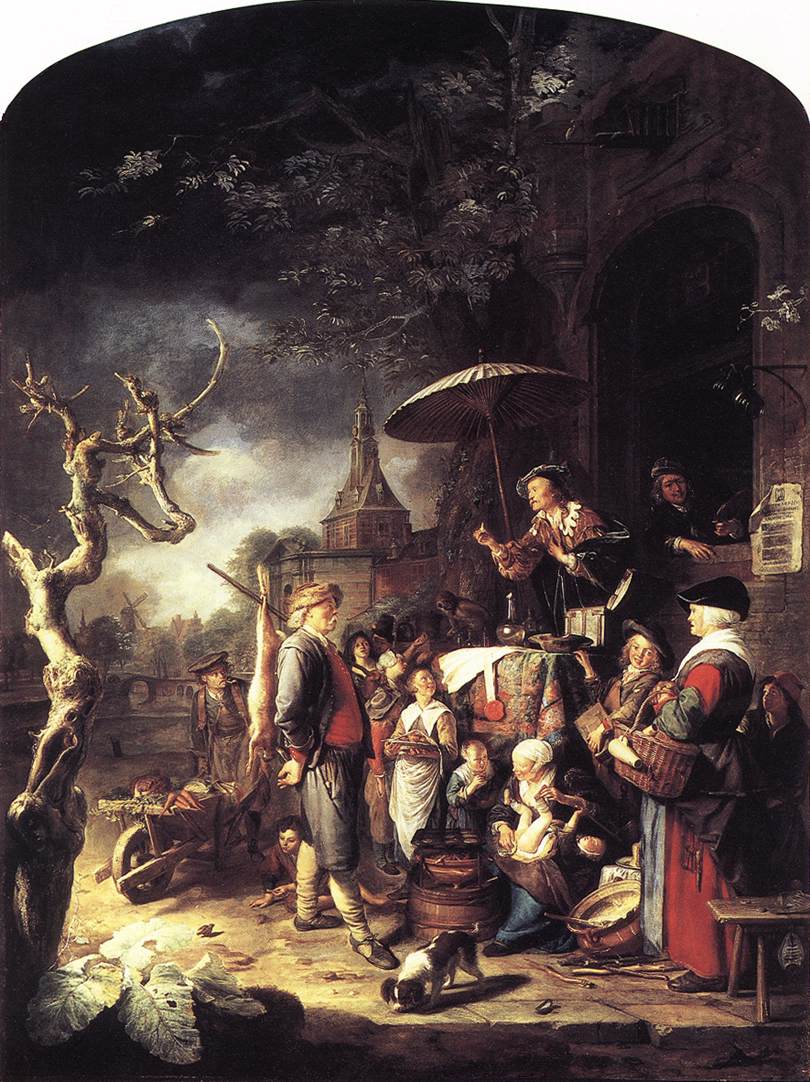“The painter does not really weave tapestries, blow glass, work gold, or bake bread. He feigns all these things in paint. This is a source of pride, but it is also a source of a certain unease.
. . . . [In his painting The Quack, 1652] Gerard Dou [Dutch Baroque Era Painter, 1613-1675]. . . . depicts himself as a painter, palette in hand, standing beside a quack who is hawking his false wares to the crowd. . . . a number of the people and objects assembled around the quack are re-presentations of pictured proverbs or maxims commonly found in Dutch books at the time. Dou culled and assembled a group of pictorial quotations with meanings roughly as follows: the seal hanging from a document on the quack’s table says “what is sealed is true”; the mother wiping her child’s behind, “life is but stinks and shit”; and the mother in her role as pancake-seller, “the seller’s prattle is meaningless, immoral talk’; the child vainly trying to trap a bird parallels the vain search for gold; and the two trees, one bare and one in bloom, the anguish of choice. . . . Each person does, or in the case of the objects is, his own thing, without any acknowledgement of his presence or, one might say, his narrative effect in the world. “People want to be deceived.” . . . Leaning out his window, in the shadow of the quack, Dou catches the viewer’s eye with his own. The picture alerts us not only to the duplicity of the quack but also to the painterly one [and to many other pseudo-professionals nowadays]” (Alpers 116-117 square brackets added).
Svetlana Alpers. 1983 (1984 paperback edition). The Art of Describing. Dutch Art in the Seventeenth Century. USA: The University of Chicago Press.
Quack’s paintings from:
- http://www.wga.hu/html/d/dou/2/quack.html
- http://www.st.ewi.tudelft.nl/~hylke/pub/images/Dou_kwakzalver.png
- http://gallery.euroweb.hu/html/d/dou/2/index.html
- http://www.fisterra.com/human/3arte/pintura/temas/charlatanes/images/charlatan%20Dou%20Guerrit.jpg
The first links are the most interesting.
Entry by Dr. Jesús A. Treviño.

